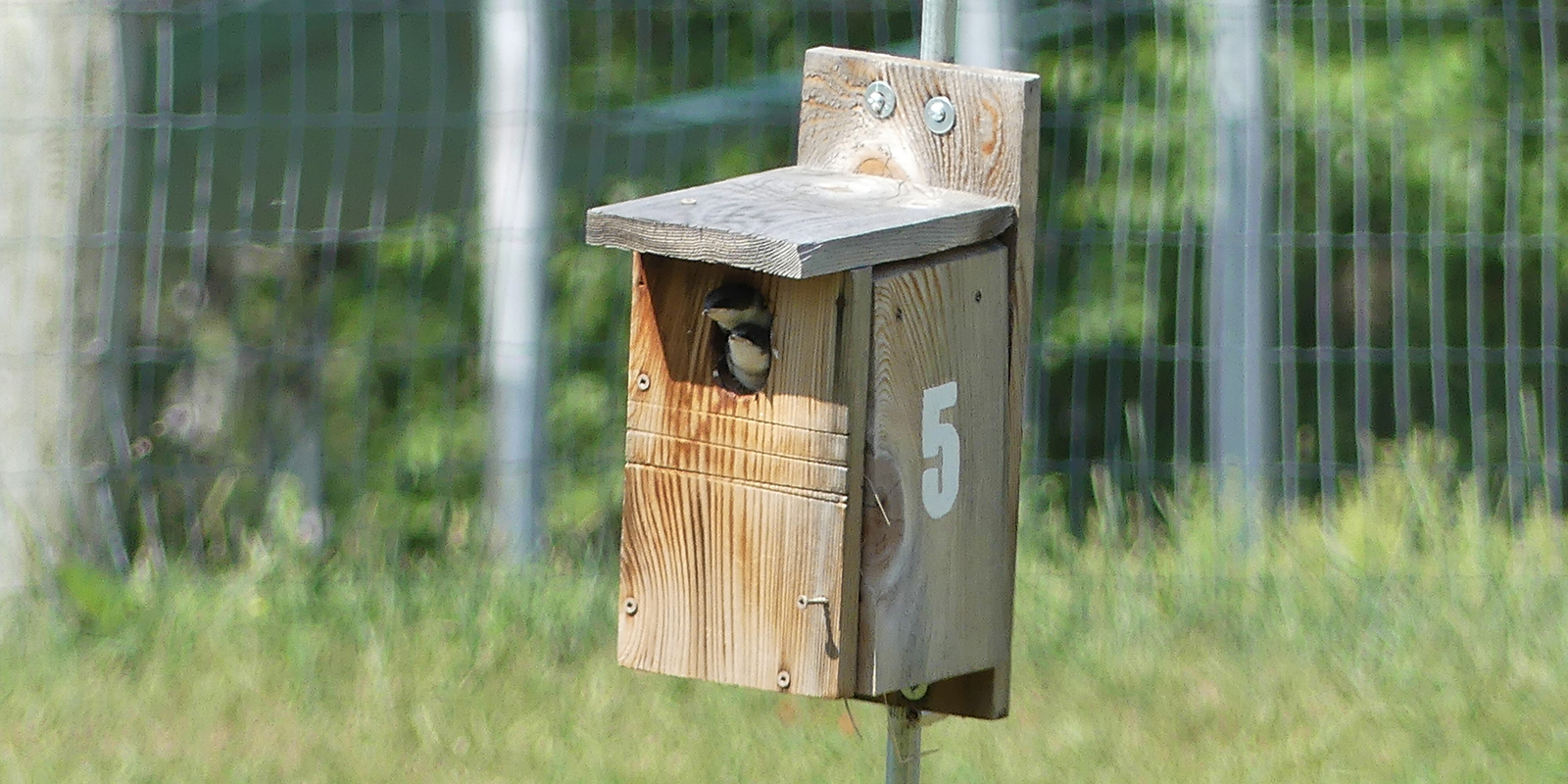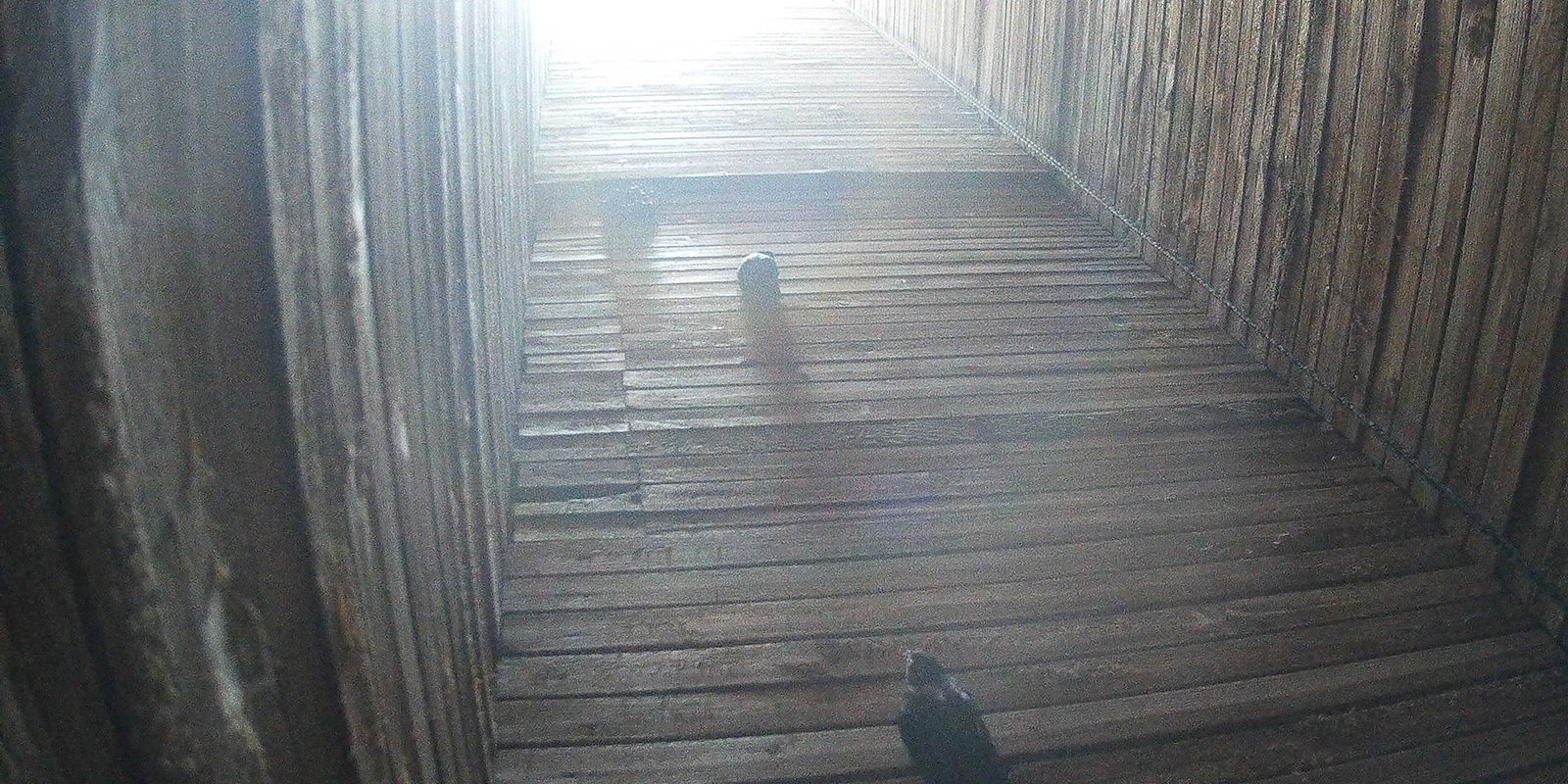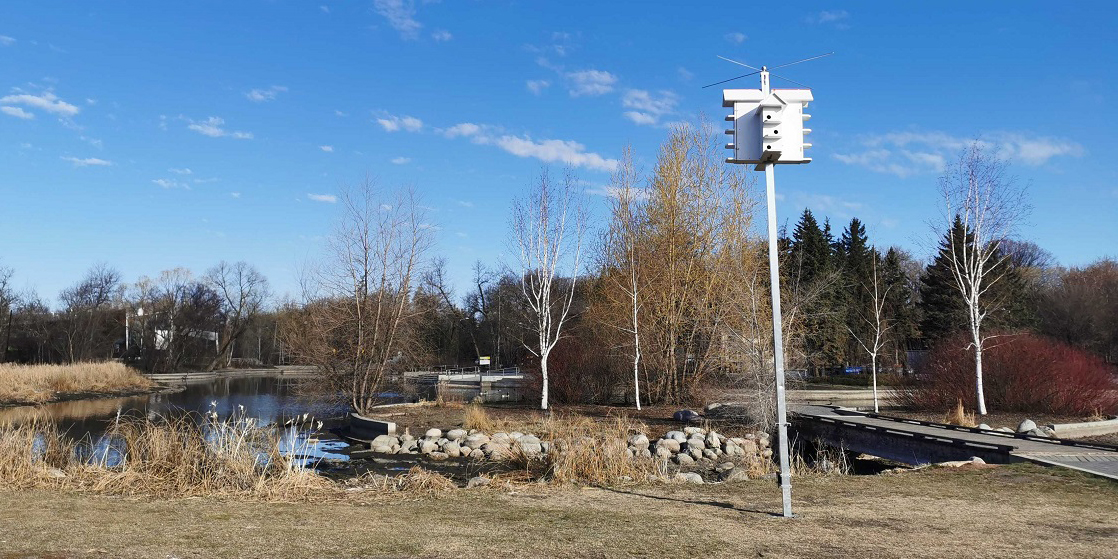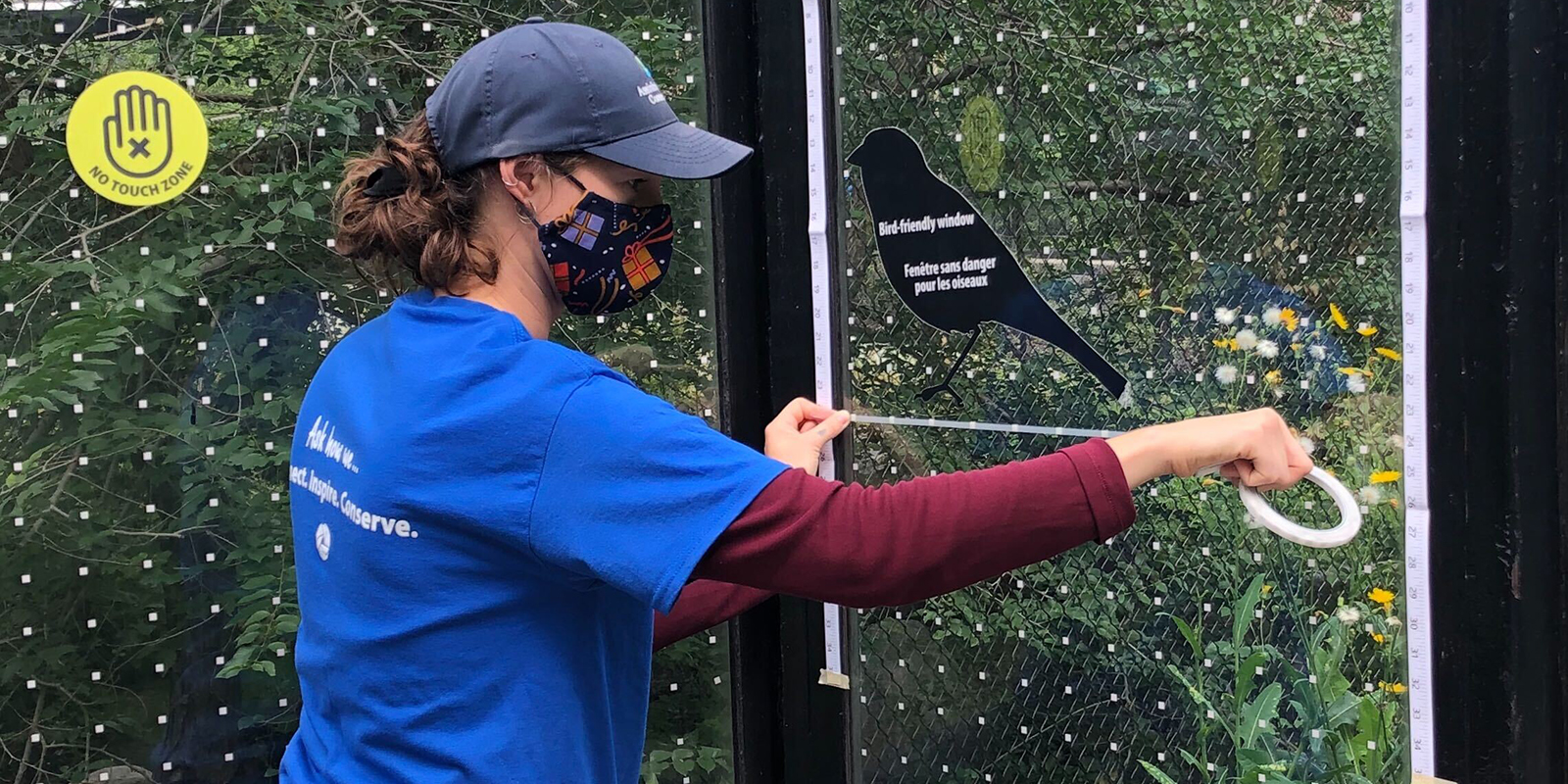The Conservation and Research team at Assiniboine Park Conservancy is involved in a variety of projects that all work towards the goal of saving local and migrating birds! Here’s how we’re helping to make a difference for birds.
Nest Boxes
During the spring, you may have noticed wooden nest boxes on poles popping up around the Park and Zoo. You may have also noticed diligent volunteers watching them! The Conservation and Research team, along with the generous help of our volunteers, have built and installed these nest boxes to increase available nesting habitat for tree swallows. Tree swallows are aerial insectivores (a bird that hunts insects while flying), which have suffered population declines over the past 50 years in North America. These declines may be caused by reduced insect abundance, climate change, and a reduction in available nesting habitat.

These nest boxes are monitored throughout the breeding season. We are happy to report that since the nest boxes were first installed in 2019, a family of tree swallows has successfully used them to raise a nest of young each year! Over those three years, these boxes have provided a safe place to grow and fledge 19 tree swallow young so far. We have also observed several families of chickadees and house wrens using the boxes as homes, both of which are species native to Manitoba.
Artificial Chimney
Next time you find yourself walking the Park paths alongside the McFeetors Heavy Horse Centre,look for the Zoo’s artificial chimney! We partnered with several local groups, including the Manitoba Chimney Swift Initiative, to install this artificial chimney as nesting and roosting habitat for a special species of bird - chimney swifts! The chimney swift is an aerial insectivore known for their cigar-shaped body and extravagant entrances into chimneys at night to roost. Historically, chimney swifts nested in tree cavities and hollows, but more recently, chimneys and other man-made structures have become their primary nesting sites. However, as chimneys become less common in modern buildings, and old structures with chimneys are torn down, the swifts are slowly losing this nesting and roosting habitat.

During spring and summer evenings, you may see volunteers watching the artificial chimney. These volunteers are helping to monitor swifts using our chimney, which contributes to a Manitoba-wide monitoring effort in collaboration with the Manitoba Chimney Swift Initiative. Chimney swifts are currently listed as a Threatened species in Canada, in large part due to habitat loss. The chimney was first installed here at the Zoo in 2018, and we are happy to report that a nesting pair of chimney swifts have used it for the past three years!
Purple Martin House
In May 2021, we installed a new bird-friendly fixture near the Duck Pond in the Park - a purple martin condo! Purple martins are known for their glossy, blue-purple plumage (feathers) and are aerial insectivores. In fact, purple martins not only catch their food while flying, they also will drink mid-flight!

Purple martins are a colony-nesting species, meaning they will nest alongside other purple martins in colonies, making the compartments of the condo a perfect home! We are collaborating with the Avian Behaviour and Conservation Lab at the University of Manitoba to monitor and band any resident purple martins that take up residence in the condo.
Bird-Window Mitigation
During your visit to the Park and Zoo you may notice some windows decorated with dots and lines. Those dots and lines are a life-saving upgrade! Windows can be challenging to see for flying birds, and cause collisions that can be deadly. Window treatments, such as small vinyl dots spaced 5 cm apart in a grid, help make windows more visible to birds. The Conservation and Research department, in collaboration with Zoo staff and volunteers, have been monitoring buildings for bird fatalities due to window strikes for several years. A few years ago, the Park Café patio was identified as a high-risk area and the windows were treated with dots in 2019. Since that installation, we are happy to report that we have seen almost no collisions at these windows!

Window collisions in North America kill up to one billion birds every year and are a leading cause of bird population declines. Small changes, like these dots on windows, protect the birds that call Assiniboine Park home as well as the birds that pass through during migration. You can help solve this conservation problem too! During the spring and fall, make your windows bird-friendly by using Feather Friendly dot treatments (now available to purchase at Wild Things Unique Gifts at the Zoo!), washable window markers, or simply by letting your windows stay a little dusty! You can also help by participating in Global Bird Rescue, an annual event hosted by FLAP Canada. This event helps raise awareness about bird-window collisions and documents them, providing important information for researchers wanting to protect birds.





